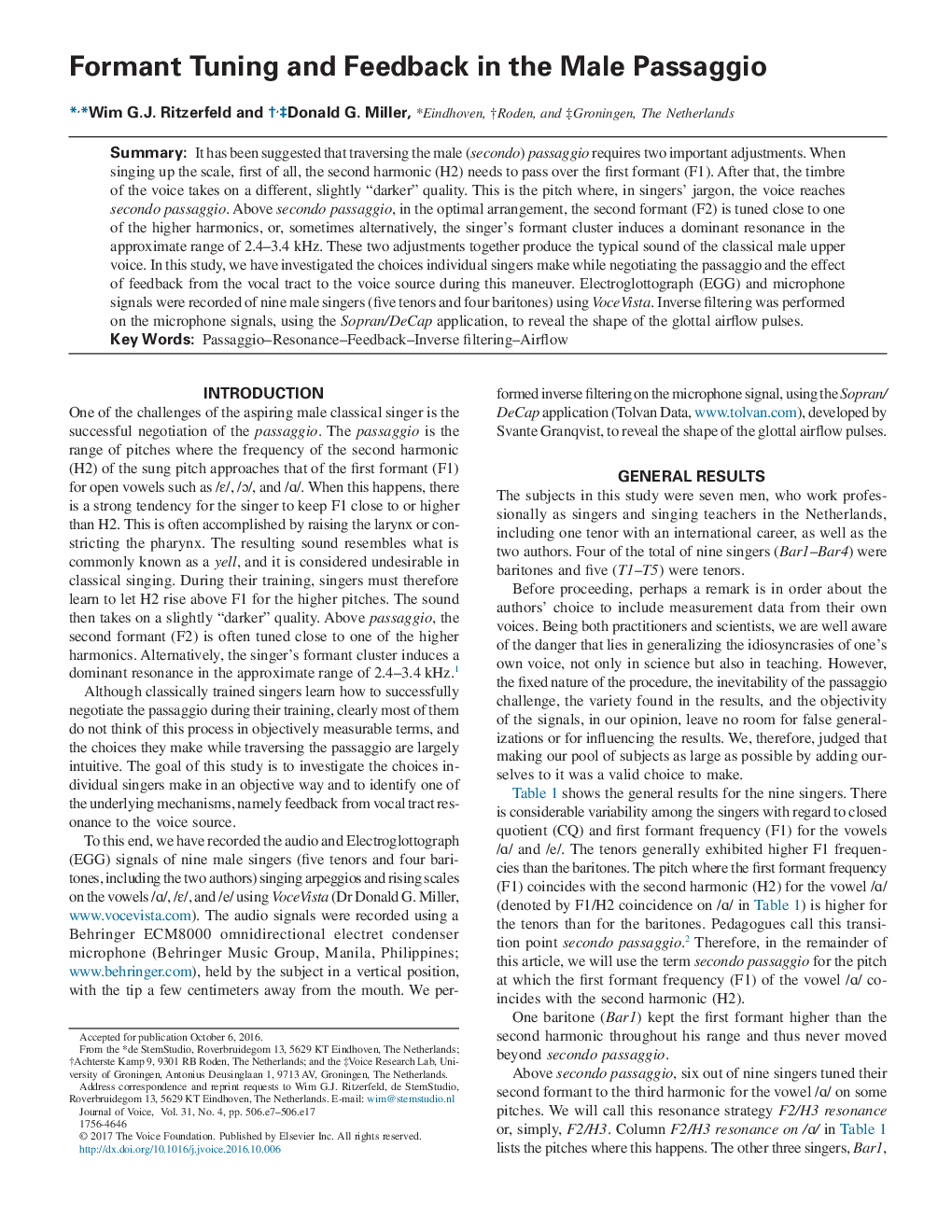| Article ID | Journal | Published Year | Pages | File Type |
|---|---|---|---|---|
| 5124182 | Journal of Voice | 2017 | 11 Pages |
SummaryIt has been suggested that traversing the male (secondo) passaggio requires two important adjustments. When singing up the scale, first of all, the second harmonic (H2) needs to pass over the first formant (F1). After that, the timbre of the voice takes on a different, slightly “darker” quality. This is the pitch where, in singers' jargon, the voice reaches secondo passaggio. Above secondo passaggio, in the optimal arrangement, the second formant (F2) is tuned close to one of the higher harmonics, or, sometimes alternatively, the singer's formant cluster induces a dominant resonance in the approximate range of 2.4-3.4âkHz. These two adjustments together produce the typical sound of the classical male upper voice. In this study, we have investigated the choices individual singers make while negotiating the passaggio and the effect of feedback from the vocal tract to the voice source during this maneuver. Electroglottograph (EGG) and microphone signals were recorded of nine male singers (five tenors and four baritones) using VoceVista. Inverse filtering was performed on the microphone signals, using the Sopran/DeCap application, to reveal the shape of the glottal airflow pulses.
